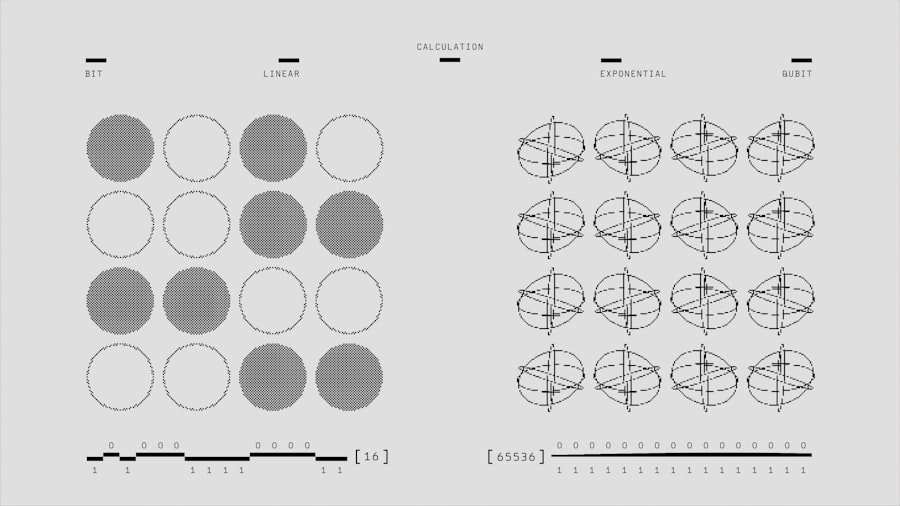Neural networks are a subset of machine learning models inspired by the biological neural networks that constitute animal brains. They are designed to recognize patterns and make decisions based on input data. At their core, neural networks consist of interconnected layers of nodes, or “neurons,” which process information in a manner analogous to how human brains operate.
Each neuron receives input, applies a mathematical transformation, and passes the output to the next layer of neurons. This architecture allows neural networks to learn complex relationships within data, making them particularly effective for tasks such as image recognition, natural language processing, and even playing strategic games. The structure of a neural network typically includes an input layer, one or more hidden layers, and an output layer.
The input layer receives the raw data, while the hidden layers perform computations and feature extraction. The output layer produces the final result, which could be a classification label, a predicted value, or any other form of output depending on the task at hand.
This ability to learn from data is what sets neural networks apart from traditional programming methods, where rules must be explicitly defined.
Key Takeaways
- Neural networks are a type of machine learning model inspired by the human brain, designed to recognize patterns and make decisions.
- Neural networks work by processing input data through layers of interconnected nodes, or neurons, to produce an output.
- The history of neural networks dates back to the 1940s, with significant advancements in the 1980s and a resurgence in popularity in recent years.
- Neural networks have a wide range of applications, including image and speech recognition, natural language processing, and autonomous vehicles.
- Training and fine-tuning neural networks involves adjusting the model’s parameters and optimizing its performance through iterative processes.
How Do Neural Networks Work?
Forward Propagation
During forward propagation, input data is fed into the network and travels through the layers of neurons. Each neuron applies an activation function to its weighted sum of inputs, determining whether it should “fire” or pass its signal to the next layer. Common activation functions include the sigmoid function, hyperbolic tangent (tanh), and Rectified Linear Unit (ReLU). The choice of activation function can significantly influence the network’s performance and ability to learn complex patterns.
Evaluating Network Performance
Once the data has passed through all layers and produced an output, the network evaluates its performance using a loss function. This function quantifies how far off the predicted output is from the actual target value. The goal of training a neural network is to minimize this loss.
Backpropagation and Optimization
To achieve this, backpropagation is employed, which involves calculating the gradient of the loss function with respect to each weight in the network. By applying optimization algorithms such as stochastic gradient descent (SGD) or Adam, the weights are updated iteratively to reduce the loss. This process continues until the network converges on a set of weights that yield satisfactory performance on the training data.
The History of Neural Networks

The concept of neural networks dates back to the 1940s when researchers began exploring artificial neurons as mathematical models of biological neurons. One of the earliest models was proposed by Warren McCulloch and Walter Pitts in 1943, who introduced a simple binary neuron that could perform logical operations. However, it wasn’t until the 1950s that significant advancements were made with the development of perceptrons by Frank Rosenblatt.
The perceptron was a single-layer neural network capable of learning to classify inputs into two categories through supervised learning. Despite these early successes, interest in neural networks waned during the 1970s due to limitations in their capabilities and a lack of computational power. This period is often referred to as the “AI winter.” However, in the 1980s, researchers like Geoffrey Hinton revived interest in neural networks by introducing backpropagation as an efficient method for training multi-layer networks.
This breakthrough allowed for deeper architectures and more complex learning tasks. The resurgence continued into the 2000s with advancements in hardware, particularly graphics processing units (GPUs), which enabled faster computations and larger datasets.
Applications of Neural Networks
| Application | Metrics |
|---|---|
| Image Recognition | Accuracy, Precision, Recall |
| Natural Language Processing | Perplexity, BLEU score, F1 score |
| Speech Recognition | Word Error Rate, Phoneme Error Rate |
| Medical Diagnosis | Sensitivity, Specificity, AUC-ROC |
Neural networks have found applications across a wide array of fields due to their versatility and effectiveness in handling complex data. In computer vision, convolutional neural networks (CNNs) have revolutionized image classification tasks. For instance, CNNs have been employed in facial recognition systems, enabling applications ranging from security surveillance to social media tagging.
In healthcare, neural networks are used for diagnosing diseases from medical images, such as identifying tumors in radiology scans with remarkable accuracy. Natural language processing (NLP) is another domain where neural networks have made significant strides. Recurrent neural networks (RNNs) and their advanced variants like Long Short-Term Memory (LSTM) networks have been instrumental in tasks such as language translation and sentiment analysis.
For example, Google’s translation service utilizes neural networks to provide more contextually accurate translations than traditional rule-based systems. Additionally, neural networks power virtual assistants like Siri and Alexa, enabling them to understand and respond to user queries effectively.
Training and Fine-Tuning Neural Networks
Training a neural network involves several critical steps that ensure it learns effectively from data. Initially, a dataset is divided into training, validation, and test sets. The training set is used to adjust the weights of the network through multiple epochs—iterations over the entire dataset—while the validation set helps monitor performance and prevent overfitting.
Overfitting occurs when a model learns noise in the training data rather than generalizable patterns, leading to poor performance on unseen data. Fine-tuning is an essential aspect of optimizing neural networks for specific tasks or datasets. Transfer learning is a popular technique where a pre-trained model—trained on a large dataset—is adapted for a new but related task with limited data.
For instance, a CNN trained on ImageNet can be fine-tuned for medical image classification by retraining only the final layers while keeping earlier layers fixed. This approach not only speeds up training but also improves performance by leveraging learned features from extensive datasets.
Challenges and Limitations of Neural Networks

Despite their impressive capabilities, neural networks face several challenges that can hinder their effectiveness. One significant issue is interpretability; neural networks often operate as “black boxes,” making it difficult for practitioners to understand how decisions are made. This lack of transparency can be problematic in critical applications such as healthcare or finance, where understanding the rationale behind decisions is essential for trust and accountability.
Another challenge is the requirement for large amounts of labeled data for training. Collecting and annotating sufficient data can be resource-intensive and time-consuming. Additionally, neural networks are prone to overfitting if not properly regularized or if they are too complex relative to the amount of available data.
Techniques such as dropout, weight decay, and early stopping are commonly employed to mitigate overfitting but require careful tuning.
The Future of Neural Networks
The future of neural networks appears promising as research continues to push boundaries in architecture design and application domains. One area gaining traction is unsupervised learning, where models learn patterns from unlabeled data without explicit supervision. Generative adversarial networks (GANs) exemplify this trend by enabling machines to generate realistic images or text based on learned distributions from training data.
Moreover, advancements in neuromorphic computing—designing hardware that mimics neural architectures—could lead to more efficient processing capabilities for neural networks. This could facilitate real-time applications in robotics and autonomous systems where rapid decision-making is crucial. Additionally, integrating neural networks with other AI paradigms such as reinforcement learning may yield even more sophisticated models capable of tackling complex tasks across various domains.
Ethical Considerations in Neural Network Development
As neural networks become increasingly integrated into society, ethical considerations surrounding their development and deployment must be addressed. Issues such as bias in training data can lead to discriminatory outcomes when models are applied in real-world scenarios. For instance, facial recognition systems have been shown to exhibit racial biases due to imbalanced training datasets that underrepresent certain demographic groups.
Furthermore, privacy concerns arise when neural networks process sensitive personal information without adequate safeguards. Ensuring that data used for training is anonymized and that users’ consent is obtained is crucial for ethical compliance.
If you are interested in learning more about the applications of Neural Networks in the field of technology, you may want to check out this article on Unlocking the Power of Advanced HTML Tags: A Guide for Web Developers. This article delves into how advanced HTML tags can be utilized to enhance the functionality and user experience of websites, which can be particularly useful when implementing Neural Networks for tasks such as natural language processing or image recognition.





















+ There are no comments
Add yours